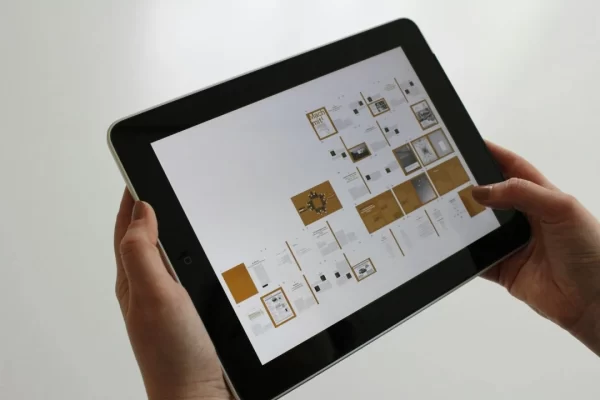UX and UI are two of the most talked-about terms in web and app design — but they’re often misunderstood or used interchangeably. The truth is, while both work side by side to create digital experiences, they are distinct disciplines with different goals and processes.
In this guide, we’ll break down what UX (User Experience) and UI (User Interface) design actually mean, how they differ, and why both are essential for creating websites and apps that not only look great but also work flawlessly.
Key Takeaways
- UX (User Experience) focuses on usability, flow, and problem-solving.
- UI (User Interface) focuses on appearance, interaction, and visual communication.
- Both are essential for building intuitive and aesthetically pleasing digital products.
- A great UI without strong UX can confuse users, while great UX with poor UI can repel them.
- Successful websites and apps balance both disciplines for maximum impact.
Table of Contents
What is User Experience (UX) Design?
Understanding UX at Its Core
User Experience (UX) design is all about how users interact with your website or app — and how they feel while doing it. It aims to make that interaction smooth, meaningful, and satisfying.
- Focuses on solving real-world problems for users.
- Designs the flow and structure of digital products, from start to finish.
- Involves user research, usability testing, wireframes, and prototypes.
- Prioritizes functionality, accessibility, and logical navigation paths.
- Iteratively improves based on real user feedback and behavior data.
A great UX design ensures that users not only find what they need but enjoy the process of getting there.
What is User Interface (UI) Design?
Understanding UI at Its Core
User Interface (UI) design shapes the visual and interactive elements of a website or app — in other words, everything the user sees, touches, and clicks.
- Focuses on aesthetics like colors, fonts, buttons, icons, and layouts.
- Designs every screen, transition, and visual interaction.
- Ensures visual consistency and brand alignment across all pages.
- Works closely with UX design to match user needs with visual flow.
- Enhances usability through design systems, style guides, and patterns.
A polished UI design makes a product intuitive and attractive — the difference between clunky and captivating.
UX vs. UI: Understanding the Core Differences
How UX and UI Design Work Differently
Although UX and UI share the same end goal — user satisfaction — their roles differ in the design process.
- UX focuses on how it works; UI focuses on how it looks.
- UX design maps the user journey, while UI decorates the path.
- UX requires research, flow diagrams, and wireframes.
- UI involves typography, colors, icons, and animations.
- Both depend on user testing but in different ways: UX for behavior, UI for perception.
Think of UX as the blueprint and UI as the paint and furniture that bring the space to life.
Why UX and UI Must Work Together
Two Sides of the Same Coin
Separately, UX and UI can only take a digital product so far — but together, they create an engaging and reliable user experience.
- A beautiful UI can’t fix poor navigation or confusing workflows.
- A flawless UX can’t shine without a visually clear and inviting interface.
- Consistency between UI and UX increases user trust and loyalty.
- Collaboration leads to fewer revisions, faster launches, and better feedback loops.
- Balanced UX and UI improve business goals: higher conversions, retention, and satisfaction.
A seamless website or app is always the result of thoughtful UX and stunning UI working in sync.
Frequently Asked Questions (FAQ)
What is the main difference between UX and UI design?
UX is about the overall feel of the experience, including problem-solving and flow, while UI is about the look, layout, and interactivity of the product. Both must align for a product to be successful.
Can a designer specialize in both UX and UI?
Yes! Some designers are “UX/UI designers” who handle both research-driven user experience design and visual interface design. However, larger projects often separate these roles for more focus.
Why are UX and UI important for business success?
A seamless UX helps users accomplish tasks with ease, and an appealing UI ensures the experience is enjoyable. Together, they improve customer satisfaction, retention, and conversions.
Is UX design only about digital products?
While commonly applied to websites and apps, UX principles can be used for any product or service — including physical products, services, and customer experiences.
Conclusion
Understanding the difference between UX and UI design is essential if you want to build websites and apps that users not only visit — but return to. UX creates meaningful, functional paths that solve real user problems, while UI wraps those paths in visually appealing design.
Together, they are the backbone of any successful digital product. One without the other is like a well-built house without paint — or a beautifully painted house with no doors.
If you want your digital product to stand out in a competitive market, invest in both UX and UI design for a balanced, seamless, and delightful user experience.
Want to build a website that’s not just eye-catching but also user-friendly? Let’s create a website that works for your audience — and grows your business. Get in touch today!



